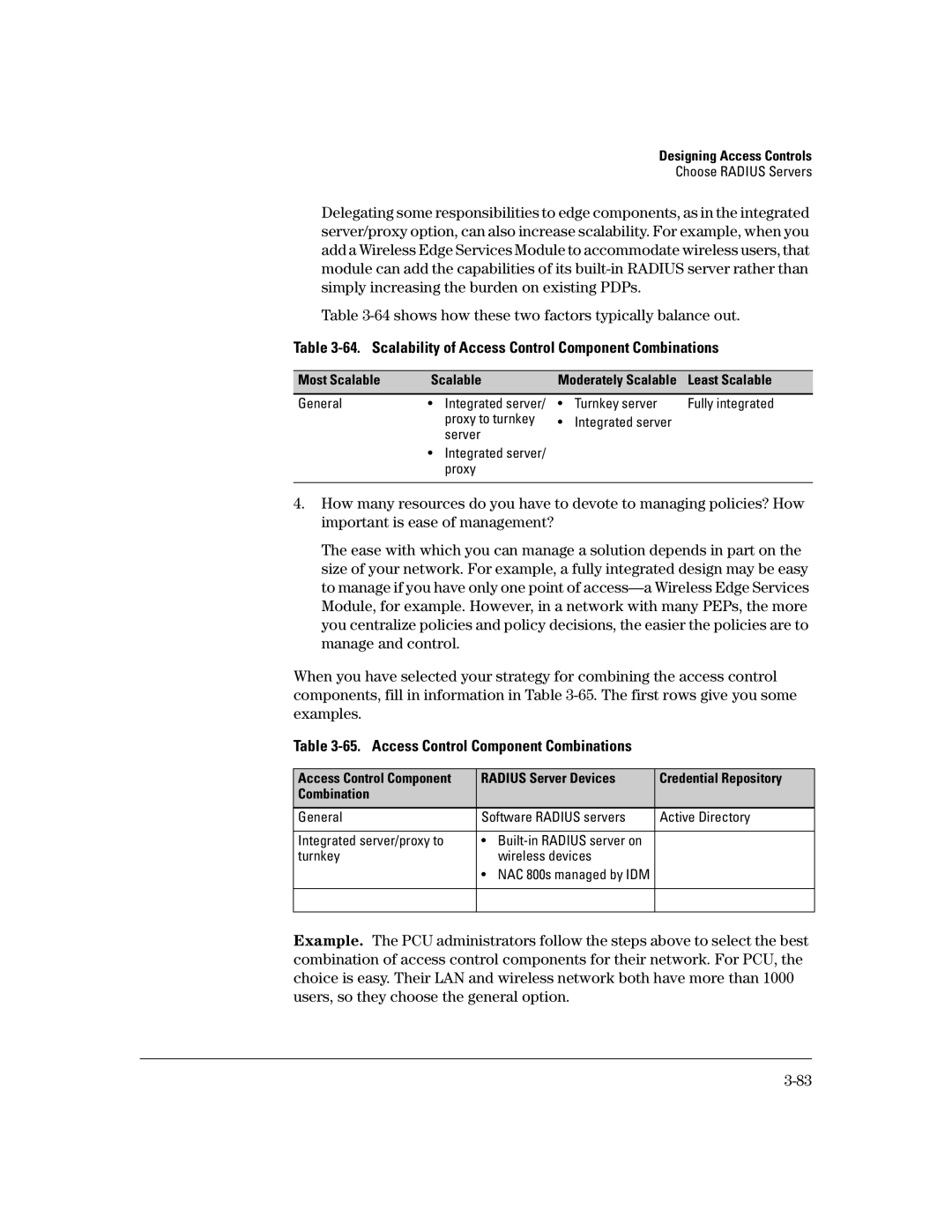
Designing Access Controls
Choose RADIUS Servers
Delegating some responsibilities to edge components, as in the integrated server/proxy option, can also increase scalability. For example, when you add a Wireless Edge Services Module to accommodate wireless users, that module can add the capabilities of its
Table
Table 3-64. Scalability of Access Control Component Combinations
Most Scalable | Scalable | Moderately Scalable | Least Scalable | |
General | • Integrated server/ | • | Turnkey server | Fully integrated |
| proxy to turnkey | • | Integrated server |
|
| server |
|
|
|
•Integrated server/ proxy
4.How many resources do you have to devote to managing policies? How important is ease of management?
The ease with which you can manage a solution depends in part on the size of your network. For example, a fully integrated design may be easy to manage if you have only one point of
When you have selected your strategy for combining the access control components, fill in information in Table
Table 3-65. Access Control Component Combinations
Access Control Component | RADIUS Server Devices | Credential Repository |
Combination |
|
|
|
|
|
General | Software RADIUS servers | Active Directory |
|
|
|
Integrated server/proxy to | • |
|
turnkey | wireless devices |
|
| • NAC 800s managed by IDM |
|
|
|
|
|
|
|
Example. The PCU administrators follow the steps above to select the best combination of access control components for their network. For PCU, the choice is easy. Their LAN and wireless network both have more than 1000 users, so they choose the general option.
